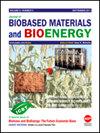Nutritional and Sensory Quality Evaluation of Low-Temperature Yogurt Sold in the Market Based on Principal Component Analysis and Cluster Analysis
IF 0.5
4区 医学
引用次数: 0
Abstract
In order to explore the quality differences of various brands of low-temperature yogurt sold in the market, the nutritional components and physical characteristics of 11 kinds of stirred lowtemperature commercial yogurt were analyzed by principal component analysis (PCA), including protein content, total sugar content, fat content, sodium content, calcium content, probiotic content, solid content, pH value, L*, a*, b*, viscosity and whey precipitation rate. In addition, combined with the method of sensory evaluation, the quality evaluation model is initially constructed. The results show that the cumulative variance contribution rate of the four principal components extracted by principal component analysis method reaches 90.74%. Based on the comprehensive evaluation function of principal component analysis method, the calculated results are significantly positively correlated with the sensory evaluation results (r = 0.909, P <0.001), which reflects the high reliability and effectiveness of the evaluation model. By cluster analysis, 11 kinds of yogurt can be divided into four groups. The first group is characterized by high protein and mellow taste, the second group is characterized by balanced nutrition and popular taste, the third group is characterized by no additive and original flavor, and the fourth group is characterized by moderate quality in all aspects. The research results provide a theoretical basis for the quality evaluation of stirred low-temperature yogurt and the research and development of fermented dairy products.基于主成分分析和聚类分析的市场上销售的低温酸奶的营养和感官质量评价
为了探究市场上销售的不同品牌低温酸奶的品质差异,采用主成分分析法(PCA)对11种搅拌低温商品酸奶的营养成分和物理特性进行了分析,包括蛋白质含量、总糖含量、脂肪含量、钠含量、钙含量、益生菌含量、固体含量、pH值、L*、a*、b*、粘度和乳清沉淀率。并结合感官评价方法,初步构建了质量评价模型。结果表明,主成分分析法提取的4个主成分的累积方差贡献率达到90.74%。基于主成分分析法的综合评价函数,计算结果与感官评价结果显著正相关(r = 0.909, P <0.001),反映了评价模型的高可靠性和有效性。通过聚类分析,将11种酸奶分为4类。第一组以高蛋白、口感醇厚为特点,第二组以营养均衡、口味通俗为特点,第三组以无添加剂、原味为特点,第四组以各方面品质适中为特点。研究结果为搅拌低温酸奶的质量评价和发酵乳制品的研究开发提供了理论依据。
本文章由计算机程序翻译,如有差异,请以英文原文为准。
求助全文
约1分钟内获得全文
求助全文

 求助内容:
求助内容: 应助结果提醒方式:
应助结果提醒方式:


